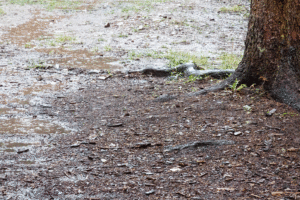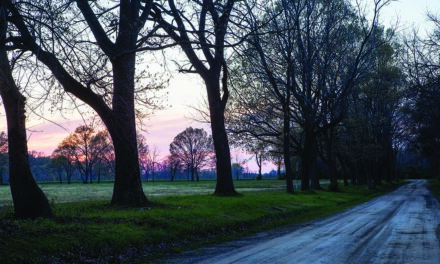
The Maryland Department of Agriculture has warned residents that landowners ought to keep an eye out for trees affected by heavy rainfall throughout the summer months. This extended wet period has created favorable growing conditions for fungal pathogens in many parts of the state.
Last month, the Maryland Department of Agriculture’s Forest Pest Management program released an advisory to “landowners to keep an eye out for trees affected by heavy rainfall throughout the summer months.
This extended wet period has created favorable growing conditions for fungal pathogens in many parts of the state.”
Kyle Ewing, Certified Master Arborist at Bartlett Tree Experts, discussed the affect the excessive rain has had on trees and plants in our area.
The prolonged dampness encouraged the growth of fungus in plants and caused roots to become infected, he said.
Fungal infections in a tree can result in a thinning crown, spots on leaves and early dropping of leaves.
Symptoms of fungal infections and their treatment may vary based on individual species.
Trees that began to lose leaves before fall would be symptomatic.
Ewing listed many of the possible species that would be affected: most fruit trees, blooming cherries, dogwood, crepe myrtle, crabapple, red maple and some oak trees.
Removing lower tree limbs may prevent further damage. As hardwoods begin to lose leaves this fall, it may become more difficult to differentiate between senescence and fungal infection, according to MDA.
Trees that appear unhealthy may regain leaves. Most trees should sprout healthy green leaves next spring, but infection may return if precipitation levels remain high.
Root infection is a little more difficult to detect but a key sign would be the crown dying.
With the roots, Ewing recommended that leaves be picked up in the fall and not left around the tree during winter. If leaves are left over the winter the fungal spores hibernate and will be released in the spring to re-infect trees and bushes.
He also advised not to plant bushes near downspouts or gutters, adding he often notices downspouts are directed at a planting which would cause the death of the root.
Turn downspouts and gutters away from plants to drain, he added.
The MDA also reminds landowners to thoroughly clean and disinfect any horticultural tools to prevent the spread of infection.
MDA encourages landowners to exercise caution or seek a professional when removing dead trees.
For more information, visit https://extension.umd.edu/hgic/topics/shade-tree-anthracnose-trees.




